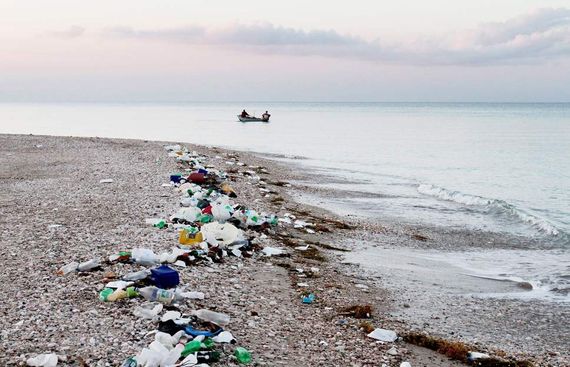Microplastic contamination found in common source of groundwater

Researchers have identified microplastic fibres, along with a variety of medicines and household contaminants, in two limestone aquifer systems -- a groundwater source that accounts for 25 per cent of the global drinking water supply -- in the US.
In the study, published in the journal Groundwater, researchers collected 17 groundwater samples from wells and springs -- 11 from a highly fractured limestone aquifer near the St. Louis metropolitan area and six from an aquifer containing much smaller fractures in rural northwestern Illinois.
All but one of the 17 samples contained microplastic particles, with a maximum concentration of 15.2 particles per liter from a spring in the St. Louis area.
"Plastic in the environment breaks down into microscopic particles that can end up in the guts and gills of marine life, exposing the animals to chemicals in the plastic," said John Scott, a researcher at the Illinois Sustainable Technology Centre.
"As the plastics break down, they act like sponges that soak up contaminants and microbes and can ultimately work their way into our food supply."
Groundwater flows through the cracks and voids in limestone, sometimes carrying sewage and runoff from roads, landfills and agricultural areas into the aquifers below, Scott said.
However, deciphering what that concentration means is a challenge, he added. There are no published risk assessment studies or regulations.
Further, the researchers also identified a variety of household and personal health contaminants along with the microplastics, a hint that the fibres may have originated from household septic systems.
"Imagine how many thousands of polyester fibres find their way into a septic system from just doing a load of laundry," Scott said.
"Then consider the potential for those fluids to leak into the groundwater supply, especially in these types of aquifers where surface water interacts so readily with groundwater."
There is still a monumental amount of work to be done on this subject, Scott said. He anticipates that microplastic contamination in both surface water and groundwater will be a problem for years to come.
Read more news:
Google created most positive buzz in India in 2018: Report





.jpg)